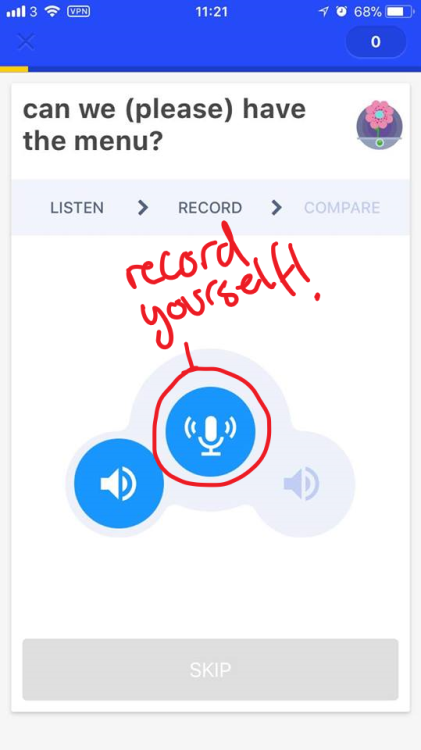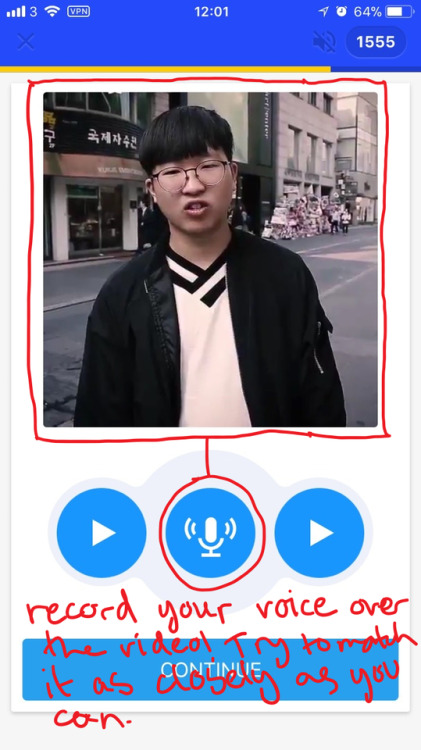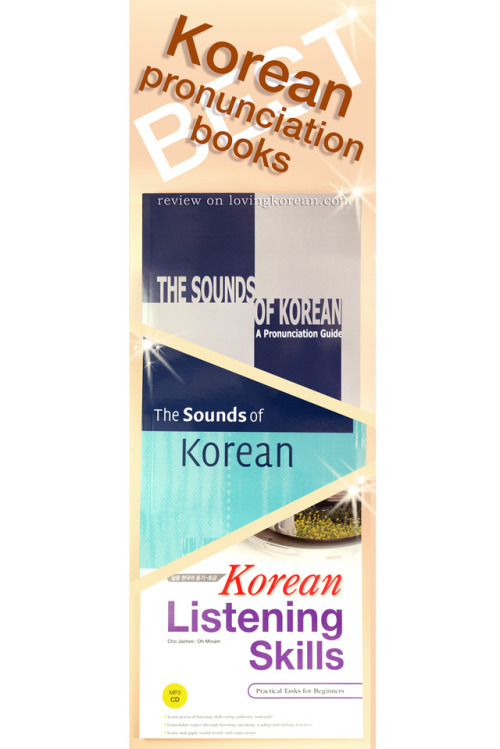#korean pronunciation
Annotated screenshots from Memrise’s Pronunciationmode.
I don’t know if this feature is available for both iOS and Android, and I don’t know if it’s exclusive to premium membership. However, before I had premium, I remember the Memrise app would kind of cycle through the different premium exclusive modes sometimes, so even if you don’t have premium you will get access to this feature on and off, I think.
Post link
TheInitial Law(두음법칙) was a law made during Japanese colonisation whereby some consonants are unable to be the main consonant of certain words. This was because some syllables (combination of consonant and vowel) were too hard for the Japanese to pronounce. In modern Korean, this law is applied with few exceptions. However, in North Korea, they do not use this law, but with a few exceptions.
In Korean (South Korea), ‘ㄹ’ and ‘ㄴ’ are subject to the Initial Law. An example of this would be the surname ‘류’ being written as ‘유’ (some exceptions). When the consonants ‘ㄹ’ and ‘ㄴ’ are used as the main consonant in the first syllable of a word, they are changed to ‘ㅇ’ or ‘ㄴ’. The Initial Law rarely applies to syllables in the middle of a word.
Applications of the Initial Law
- ‘ㄴ’ or ‘ㄹ’ changing to ‘ㅇ’
- ‘렬’ and ‘률’ following a vowel or ㄴ batchim are pronounced as ‘열’ and ‘율’
- When ‘녀, 뇨, 뉴, 니, 랴, 려, 례, 료, 류, 리’ is at the start of a word, it is pronounced as ‘여, 요, 유, 이’, '야, 여, 예, 요, 유, 이’
- 한자음 '라, 래, 로, 뢰, 루, 르’ 등 ㄹ+ㅣ를 제외한 단모음이 단어 첫머리에 올 때 '나, 내, 노, 뇌, 누, 느'로 발음한다.
For example, 림 ➡️ 임, 로 ➡️ 노, 념 ➡️ 염, 라렬 ➡️ 나열This does not apply to foreign words or words that are not of Korean origin.
- Hanja compound words use the Initial law for syllables other than the first syllable (e.g. 신려성 ➡️ 신여성, 공렴불 ➡️ 공염불, 회계련도 ➡️ 회계연도)
Exceptions to the Initial Law
- Syllables other than the first syllable (e.g. 남녀, 은닉, 독자란, 비고란)
- 준말에서 본음으로 소리 나는 것은 본음대로 적는다.
- When a shortened word (like it’s) sounds like the actual word (e.g. 국제연합 shorted as 국련 )
- Dependent nouns (e.g.냥, 년, 리, 량)
- 냥- old counter for money, 년- counter for year, 리- old counter for distance, 리- reason, 량- counter for train carriages
- If a name with only one syllable is pronounced with the surname as one (e.g. 신립, a general in Joseon)
- If a name is not one syllable, the Initial Law applies
Changes in the Initial Law
Surnames that had previously been changed due to the initial law can be changed back (이➡️리, 임➡️림, 유➡️류)
Review of three Korean textbooks: one focusing on Korean pronunciation, one one Korean listening skills and one on Korean phonology: Best Korean speaking and listening textbooks
Post link
In this series, I’ll be going over the basics of Hangul (한글): all the letters + their pronunciation + the alphabetical order. In this video, I go over the next 4 consonants: ㅋ, ㅌ, ㅍ, ㅎ. They are 4 of the 5 aspirated consonants. The 5th one is ㅊ and was discussed in the previous video.
So, I’ve seen this chart on consonant cluster’s floating around. But since it’s quite simplified and omits some crucial information, I think I should throw some resources into the everything the tumblr void in case somebody cares.
(Korean)The korean government got you completely covered, including all exceptions! For instance normally ‘여덟[여덜], 짧아[짤바] but ‘밟다’ is read as ‘밟다[밥ː따], 밟지[밥ː찌].
(English)The korean wiki project also has a great article about this. Not as in-depth as the previous one but definitely enough.
In general I think memorising this stuff isn’t the best way to go about it.
Not an expert on this, but how I learned this by following a native speaker reading a text while reading the text. Listening actively. Doing this until I could follow along enough to read out loud.
You can do this with an audio recording but of course if you have a native speaker around to do this with and who can correct your pronunciation instead of a recording, that’s even better.
In this series, I’ll be going over the basics of Hangul (한글): all the letters + their pronunciation + the alphabetical order. This is the final post in this series. In this video, I just go over some English loan words used in Korean so you can see how their pronunciation is different than the English pronunciation. This can also help you practice reading hangul since you should know the meanings of all these words already! Take a guess at what the English equivalent is :)
In this series, I’ll be going over the basics of Hangul (한글): all the letters + their pronunciation + the alphabetical order. In this video, I go over the alphabetical order of the consonants and vowels.
In this series, I’ll be going over the basics of Hangul (한글): all the letters + their pronunciation + the alphabetical order. In this video, I go over the last 3 vowels: ㅡ, ㅢ, ㅣ.
In this series, I’ll be going over the basics of Hangul (한글): all the letters + their pronunciation + the alphabetical order. In this video, I go over the next 5 vowels: ㅜ, ㅝ, ㅞ, ㅟ, ㅠ
In this series, I’ll be going over the basics of Hangul (한글): all the letters + their pronunciation + the alphabetical order. In this video, I go over the next 6 vowels: ㅗ, ㅘ, ㅙ, ㅚ, ㅛ.
In this series, I’ll be going over the basics of Hangul (한글): all the letters + their pronunciation + the alphabetical order. In this video, I go over the next first 8 vowels: ㅏ, ㅐ, ㅑ, ㅒ, ㅓ, ㅔ, ㅕ, ㅖ.








